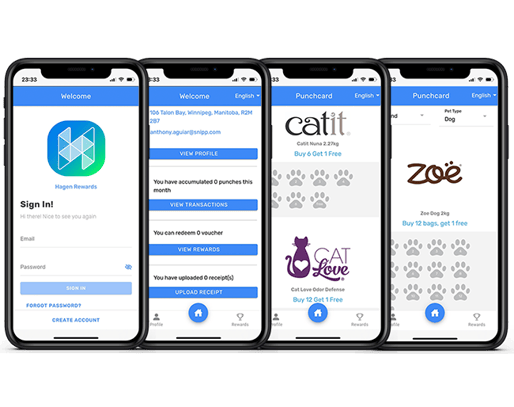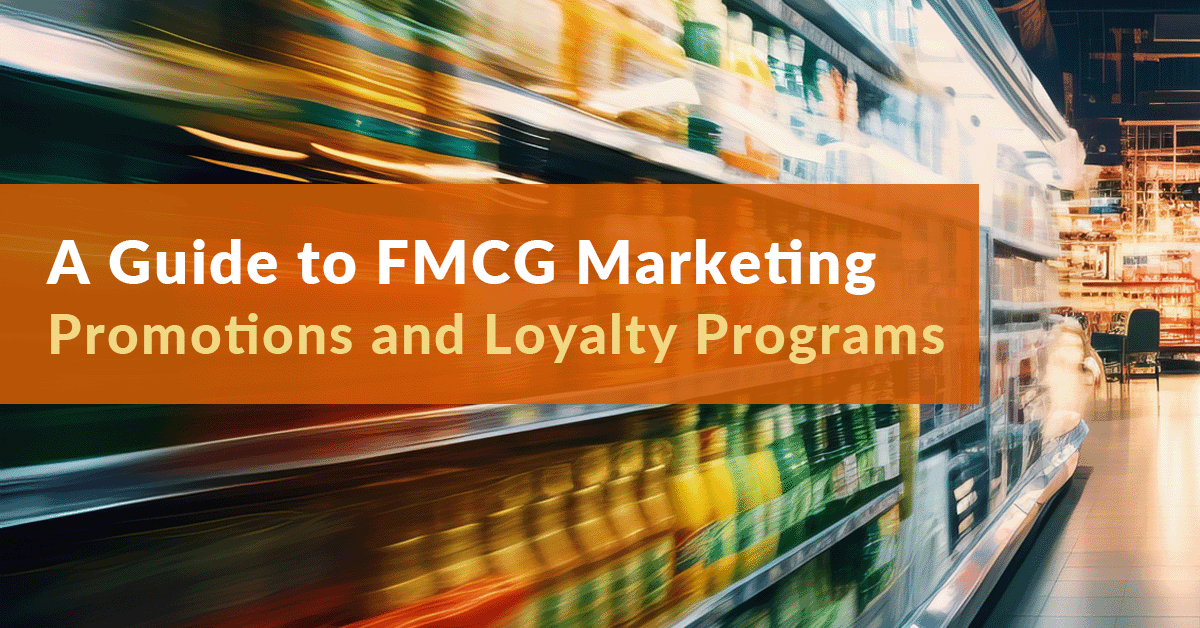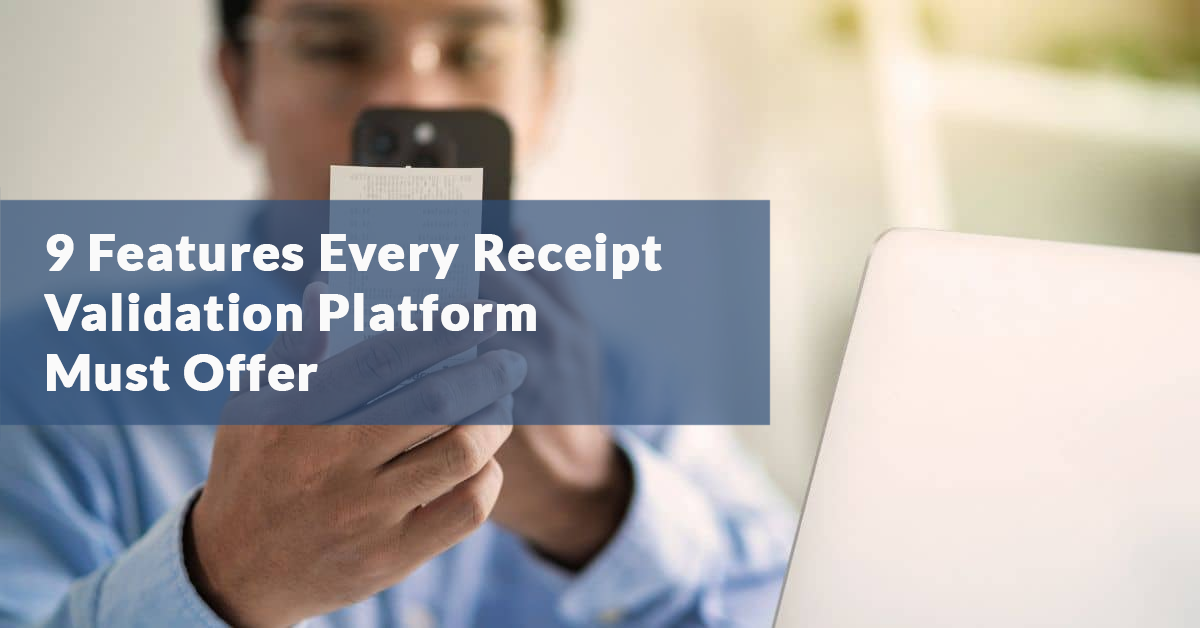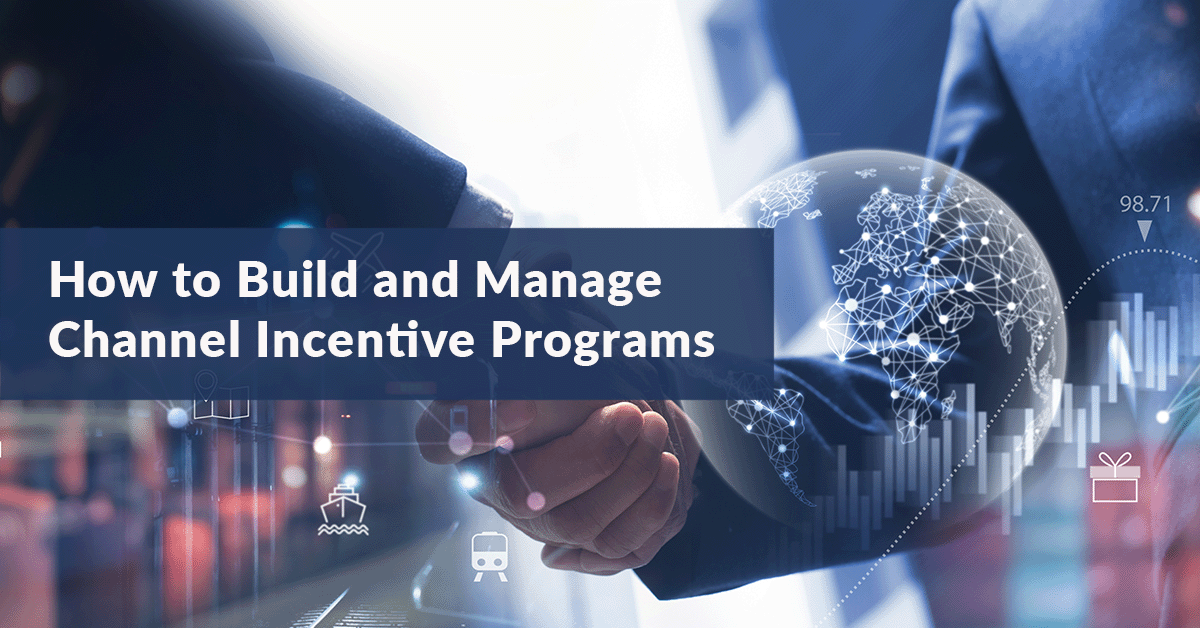The Fast-Moving Consumer Goods industry (FMCG) is how Europe, the Middle East, and Asia often refer to what the US calls the consumer-packaged goods industry (CPG). The Fast-Moving Consumer Goods industry refers to products consumed or replaced regularly with examples including perishables such as food and beverages, cleaning supplies, over-the-counter medicines, makeup, personal care products, and pet foods.
To look at some sub-sectors of FMCG in Europe:
- The European food & drink industry was approximately US$264 billion in 2022 with projected growth rate of ~12%, putting it at US$296B in 2023
- The alcoholic drinks market is expected to reach US$224 billion in 2024
- The European cosmetics industry was valued at US$22.3 billion
- The home cleaning market is estimated to reach US$45.72 billion in 2023
- The pet food industry is projected to be ~US$43B in 2024.
FMCG is a highly competitive industry with rapid sales, constantly changing market dynamics, and fickle consumers who often value low prices. Winning and retaining loyal customers is challenging for even the most popular brands, so marketers need a strategy that captures consumers' attention, builds loyalty, and drives purchases.
Designing an FMCG Marketing Strategy
An FMCG marketing strategy is a comprehensive plan that enables brands to effectively promote, distribute, and sell their products to consumers. FMCG marketing strategies aim to maximize product visibility, brand awareness, and sales and involve a combination of offline and online channels and tactics, including brand websites, marketplaces, social media, influencer marketing, pricing and promotions, paid advertising, loyalty programs, channel programs, in-store promotions, signage, display, and print and trade shows and events.
Data Analytics & Consumer Insights
Due to the fast-moving nature of FMCG product sales, marketing strategies must focus on understanding consumer purchasing habits, constantly changing preferences, and evolving trends. Having a data-driven marketing strategy that captures shopper data through in-store purchases and online shopping means marketers can understand consumer shopping habits and preferences on a deeper level, allowing them to create more contextual, personalized experiences.
Branding & Positioning
Brand awareness is key to FMCG marketing. If consumers don’t know your products exist, then they won’t purchase them. What sets your brand apart from the competition? Why should consumers choose your products? Define your brand’s identity, including values, mission, personality, and unique selling propositions, and speak to these in your marketing communications. Branding also involves packaging, as well as the look and feel of your brand - all important aspects that attract a consumer's attention.
Positioning is another key aspect of defining your brand. Are you the cheapest product? The highest quality? A commitment to sustainability and social responsibility are other ways to set a brand apart.
Promotions, Contests & Sweepstakes
Inflation is driving significant changes in consumer shopping. Forty percent of the consumers will shop around, another 20% will buy in bulk for better prices, and 54% will search for or wait for promotions before purchasing a product. Price sensitivity is real, and brands must find ways to encourage sales when they can't decrease prices overall.
All consumers love a deal, but for FMCG consumers, you can sweeten the deal by offering rewards for purchasing. Cashback or Rebate Promotions, Money-back Guarantees, Coupons, multi-item discounts, BOGO, as well as contests and sweepstakes, play an essential role in overcoming this trend. For example, if a consumer purchases two products from a brand, they can upload their receipt to receive a special gift or be entered to win a prize.
Two things to point out here. The gifts and prizes must be something consumers would want, and the process to receive them should be as simple and seamless as possible. The more effort required by the consumer, the less willing they are to participate, resulting in not purchasing the product. The benefit for the FMCG brand is that they can get valuable consumer insights through receipt data.
Sweepstakes are similar to contests and promotions, but they are a game of chance, as opposed to a game of skill or an immediate reward. FMCG brands can encourage consumers to buy their products by giving them a chance to win prizes. Prizes that are limited editions, exclusive events, or rewards improve the chances of a consumer entering.
Learn more about sales promotion strategies for price-sensitive consumers here.
Instore Marketing and Merchandising
Fast-moving consumer goods are traditionally sold in supermarkets and convenience stores, which means you need to have a solid in-store marketing and merchandising strategy. Where your product is placed on the shelf, signage, and displays are tactics to consider and negotiate with stores.
You can also tie online contests and promotions to in-store displays and coupons, bridging online and offline marketing.
Shopper Marketing
Shopper marketing is a critical component of an FMCG marketing strategy focused on improving the shopping experience at the point of purchase - in-store or online.
In-store, it can include tactics such as demos and tastings (think of those pop-up stations at your local Costco) combined with coupons to purchase. It can include BOGO (buy one, get one) offers and multi-buy discounts (buy one at €4.99, but 2 or more at €3.99 each). It can also include the environment's ambiance (90% of global consumers are likelier to revisit stores that leverage music, visuals, and scent).
Online shopper marketing tactics include offers at the point of adding an item to a shopping cart. For example, they could offer a coupon or recommend 'subscribe and save' for a discounted price. You can also use the BOGO and multi-buy offers online and recommended products that go along with the product the consumer is adding to their cart. Other tactics involve social media, including sponsored ads or influencer posts of products with links to purchase.
Shopper marketers spend a lot of time studying shoppers' behavior when they are in shopping mode. In-store that means watching how shoppers move through isles and what gets their attention. It also means analyzing receipts to see what products shoppers buy while in-store, , or what products they purchase together. Online, it can include website traffic patterns, abandoned shopping carts, email offers, and more.
The purpose of shopper marketing is to find ways to raise the awareness of a product as the consumer shops, offering incentives along the way to move them towards actually buying the product. In addition, shopper marketers build retailer relationships and provide support to retailers who in turn provide incremental shelf and display space/ visibility.
Loyalty Programs
Loyalty is challenging for FMCG brands because, traditionally, it's been about brand recognition and product quality. Although these things are still important, what drives consumer loyalty now is more about the experience and tailored, personalized messaging. Recent studies show that 64% of consumers prefer to buy from brands that see them as individuals, and 33% would pay for this level of personalization.
Loyalty programs are a great way to engage with consumers and retain their loyalty. These programs can capture a great of consumer shopping data and preferences, enabling a brand to tailor product offers, content, and digital shopping experiences. In return, brands give consumers access to exclusive events and offers and the ability to earn points for even more rewards.
You can still encourage consumer loyalty when you don't have a loyalty program. Take the time to understand what consumers value most and create campaigns and programs that speak to those values. Consumers who are invested in sustainability want to hear about your sustainability commitment and practices. Many consumers are also committed to social good, so enabling them to donate to charities and having the brand match or double those donations demonstrates the brand's values as well.
Another way to build loyalty is to partner with others. Delivery services and retail media network partnerships provide a wealth of consumer data that enables brands to understand their target consumers better and build products and marketing campaigns that are more personalized and targeted.
FMCG Marketing Trends to Watch
It's important to continuously track trends in the industry, including consumer buying patterns and sentiment. Here are some trends to keep an eye on.
The Rise of Private Labels
Private labels in Europe have moved beyond representing mere alternatives to national brands and they have adopted sophisticated strategies to position them as serious competitors within the FMCG market. According to Statista, private labels have a 36% share of the market in Europe, with over 50% share in Switzerland and over 40% in the UK, Spain, and the Netherlands. In the confectionery industry, 2023 saw Belgian supermarket chain Colruyt challenge Mondelez, the company behind Oreo and Milka chocolates, over its price increases. German supermarkets Rewe and Edeka did the same with Mars, the maker of Snickers and Twix.
The Growth of Retail Media Networks
Reaching customers through traditional marketing channels can be challenging, especially if the brand primarily deals with physical retail stores. Promoting products through retail media networks gives a brand a broader audience base and access to consumer shopping data to help them improve their marketing and products. In addition, the Retail Media Networks, other media networks that FMCG brands can tap into are being developed, including the Payments Media Network - a solution that allows brands to reach banks’ audiences with targeted, SKU-level offers and promotions on everyday spend items
The Continued Importance of Omnichannel Marketing
Consumers shop for FMCG products online, via apps, in-store across multiple touchpoints. Brands that can provide a seamless shopping experience across all channels and touchpoints, including in-store, mobile, online, and social are finding success. Omnichannel marketing enables consumers to shop and purchase products across multiple channels, including the website, retail media network, social media, mobile app, and in-store. Consumers that shop using multiple channels have become the norm, so brands need to build marketing strategies that ensure they are getting consistent information and offers across channels, along with the ability to purchase the product easily, at whatever point in the journey they want.
Sustainability, Health & Ethical Marketing
The demand for sustainable products is growing across the world. This is especially true in Europe and the Middle East. Compostable, reusable, and recyclable packaging demonstrates a commitment to sustainable practices, along with the use of vegan ingredients or cruelty-free sourcing of ingredients for food and non-food products (e.g. cosmetics and personal care). For CPG food industry, 60% of Europeans have expressed a commitment to healthier eating. But it’s important to not market your products and practices as sustainable if they aren’t. The key is to be truthful, open and transparent about how your products are made, and how your brand is working to reduce its carbon impact or implement more sustainable practices.
The Looming Specter of Artificial Intelligence
Artificial intelligence (AI) is starting to play a bigger role in FMCG. Voice search, chatbots, virtual assistants, and recommendation engines are helping consumers find and order the right products quickly and easily. Ensuring your products can be found online easily, through online retailers, your own ecommerce site, or through social media, is essential.
But AI isn’t just to help consumers find products. It’s also for brands to better understand consumers. Predictive analytics can surface insights that help marketers improve marketing strategies and create personalized, targeted experiences at the right time and in the right place.
The Rise of the Customer Influencer
Influencer marketing is extremely popular, but what about leveraging your customers to promote your brand? Customer influencers aren't paid; they promote a brand because they love it, and 82% of Gen Zers put more trust in brands that use real customers in their marketing. Finding ways to encourage and promote this kind of user-generated content is important to help raise brand awareness and encourage sales.
FMCG Marketing Examples
There are a variety of marketing strategies FMCG marketers can use, including those involving ecommerce, social media, pricing, and promotions. Let’s look at some examples (in this case we'll share examples from the promotions, loyalty and Augmented Reality angles) that help us understand what’s working and why.
Kellogg's Basketball-themed Shopper Promotion
To increase consumer engagement with its Special K winning moment basketball promotion in multiple countries, including Spain, France, Germany, and across MENA, Kellogg's integrated receipt validation technology to help validate purchases. The idea was to create a seamless customer experience while giving Kellogg's invaluable consumer data to drive decision-making. Kellogs did a similar promotion with the Italian soccer team Laliga and David Villa.
Why it works: This is a great example of a brand leveraging sports marketing to connect with its target market. Sports fans are super fans and get excited about the opportunity to meet their sports heroes, win trips to games, and win swag. By working with popular teams and sports starts, Kellog gets access to a huge consumer base to grow its brand.
Xbox and OPI Gift with Purchase
Xbox partnered with OPI on a global, exclusive line of nail polish. Consumers were rewarded with in-game content for Forza and Halo by purchasing qualifying OPI products and uploading their receipts. The program was launched across 12 countries and was localized, including market-specific languages, qualifying rules, customer service, and micro-sites. Xbox and OPI were able to track individual programs and the entire program overall, providing them with a wealth of purchase data.

Why it works: Most gaming contests and promotions are geared toward males, but the number of female gamers has been growing steadily. One study found that 76% of girls play video games regularly. Tailoring promotions towards this growing market segment works for both companies.
Ferrero Kinder's Receipt Validation Sweepstakes
With the help of Snipp, Ferrero's Kinder kicked off a bilingual sweepstakes program where customers could purchase a product, scan the QR, and submit their receipts via WhatsApp to get entered into the sweepstakes. Rewards included Kinder customized UNO packs and wallpapers. The promotion was in English and Arabic and occurred across retailers in 4 GCC countries.
Why it works: Every kid loves a Kinder egg, but children aren’t allowed to participate in sweepstakes and contests. Ferrero created a campaign that gives kids great rewards but requires parents to get involve and share their purchase data. The brand make the contest easy by using a popular chat app in the GCC.

Absolut Vodka’s Product Tour
Absolut Vodka created a campaign that took users on a 3D tour of their hometown, Ahus, Sweden. Consumers had to download an app, scan the bottle, or use the campaign website. Using the app, they explored the region, learned how the product was made, and were given a free drink recipe.
Why it works: Storytelling is a key marketing strategy for FMCG brands that want to build a loyal customer base without relying on being the cheapest product. By explaining the story of the brand and showing customers how their product is made, it encourages customers to become invested in the brand. Plus, everyone who drinks, loves to learn new recipes to try, so offering the recipe is another way to create engagement.
Goose Island's Omnichannel Sweepstakes Promotion
Goose Island, a craft beer manufacturer, set up a sweepstakes program to help it collect first-party consumer data so it could deliver an omnichannel, cohesive customer experience. Consumers could upload an image of a Goose Island pint glass or a scan of their receipt for a Goose Island product and enter into a sweepstakes to win select rewards, including a hosted party.
Why it works: A lot of contest and sweepstakes are for smaller rewards, but this one includes a hosted hop party. That’s enough to get customers to play along. But, by entering the sweepstakes, customers are also giving the brand an inside look at their buying patterns, enabling the brand to create better experiences that will engage customers and increase sales of its product.

Reckitt Enfamil Enhances CX in its Loyalty Program
Reckitt wanted to enhance their loyalty program in the Philippines, aiming to boost consumer engagement and lifetime value. They also wanted to gather more customer data to help them improve personalized experiences and support product development. By adding new functionality, such as promotions, segmentation, rewards, and non-purchase earning activities, as well as integrating receipt processing, the company was able to capture an incredible amount of purchase data.
Why it works: Customers don’t mind providing their information if they are getting something in return. By sharing receipts and other data, customers can receive more personalized promotions and rewards which, in turn, encourages them to share even more personal data. It’s a win-win for the brand and the customer.
Hagen Implements a Punch Card Loyalty Program App
Moving from a paper-based frequent buyer program to a digital one to drive loyalty and basket was a goal of Hagen, a pet food company in Canada. Independent retailers were using outdated paper-based loyalty programs that were challenging for both the customer and the retailer. A new Punch-Card Loyalty Mobile App enabled customers to take photos of receipts and earn punches for six different brands participating in the program. When a customer filled a Punch-Card, they received a coupon for a free bag of pet food.
Why it works: Anyone who has pets knows that pet food is not cheap. Offering a coupon for a free bag of pet food encourages customers to continue purchasing the same brand and redueces the need to offer the cheapest price.

L’Oreal Stands Up Against Street Harassment
![]()
L’Oreal partnered with global NGO, Right to Be, for the campaign, “Standup Against Street Harassment.” The campaign focuses on teaching people how to intervene in situations where they believe someone is being harassed. It includes an international Stand Up training program built on the Right To Be’s 5 Ds methodology (distract, delegate, document, delay, direct).
Why it works: There are many great cosmetic brands out there, and L’Oreal is one of them. But it’s also one of the most expensive. This is a great example of how a brand is committed to social responsibility and shows its target audience (women) that they have the right to be exactly who they want and they don’t have to sell their brand at the lowest price to do it.
How FMCG Industries Approach Marketing
Although they are all FMCG industries, there are differences in what a particular industry does to drive revenue and build loyalty. A few examples:
- Social commerce and Indie Brands drive a lot of revenue in the Cosmetics Industry. Studies show that 52% of millennials and 48% of Gen Z are inspired by other users or influencers. This explains why many cosmetics brands develop influencer programs and create loyalty campaigns around user-generated content.
- There are over 113 million cat households and 92.7 million dog households in Europe, and many pet owners shop online and in-store for pet products. Marketers in the pet care industry who focus on omnichannel marketing have better reach and opportunities for higher growth.
- The European home cleaning market was estimated to reach US$ 45 billion, including triple growth in natural household cleaners. A focus on sustainability, including refillable products, multi-purpose cleaners, and eco-labeling, is key to reaching this market. Social media also plays a key role with the rise of "cleanfluencers" - cleaning personalities on TikTok, Instagram, and Facebook that blend education with entertainment.
- New experiences in the Alcohol industry can win over new consumers, with virtual and digital experimentation expected to reach new levels. Also, consumers are more likely to try new products at restaurants and bars, so marketers will need to think about how to take advantage of this to encourage more sales in other places.
- Men's personal care, gender-neutral products, sustainable packaging, and a willingness to experient are all trends in the Personal Care industry that marketers can lean toward. Consider purpose-driven campaigns, seasonable campaigns to take advantage of seasonable products, and social media influencers to get your brand known.
Getting Help from FMCG Marketing Agencies
FMCG marketing agencies are specialized agencies that provide a range of marketing and promotions services to brands that don't have the resources or time to do all their marketing alone. These agencies have in-depth experience in the FMCG market, so they know what works with today's consumers and continually have their attention on changing behaviors and industry trends. Some of the services these agencies provide include:
- Market and Consumer Research
- Loyalty management programs
- Contests and Promotions Management
- Digital Rebate Management
- Event Management & Public Relations
- Community Management
- Social Media Marketing
- Instore Promotions
Final Thoughts
The dynamic landscape of the FMCG industry demands agility and innovation. Constantly changing consumer preferences, rising costs, and new market trends require brands to invest heavily in data-driven strategies and campaigns, regardless of which FMCG market they are in. Leveraging shopper marketing and promotion strategies such as contests, sweepstakes, and virtual experiences, alongside fostering loyalty through tailored initiatives, is vital for sustained success. The ultimate key is to keep a constant eye on the consumer and adapt quickly. To get help with your FMCG marketing strategy or specific campaigns, contact our promotions and loyalty experts by contacting us!






